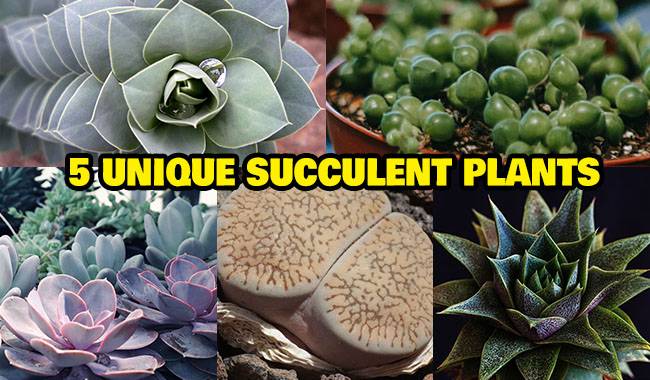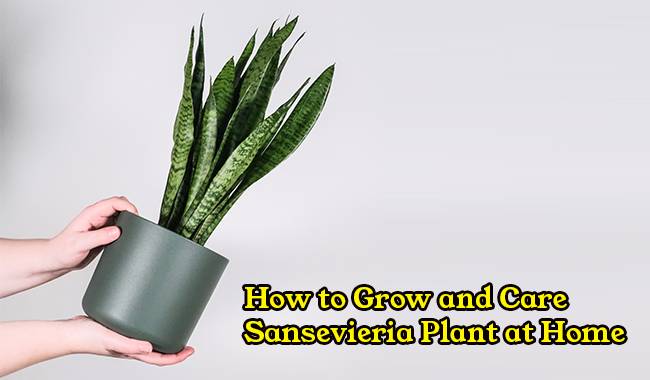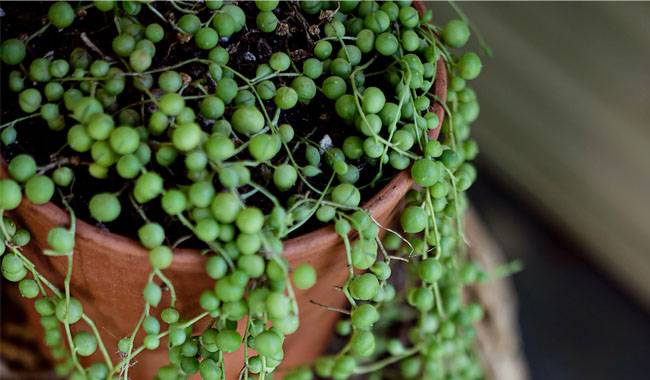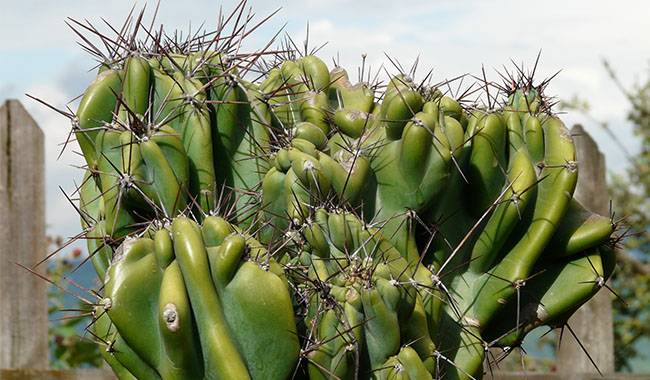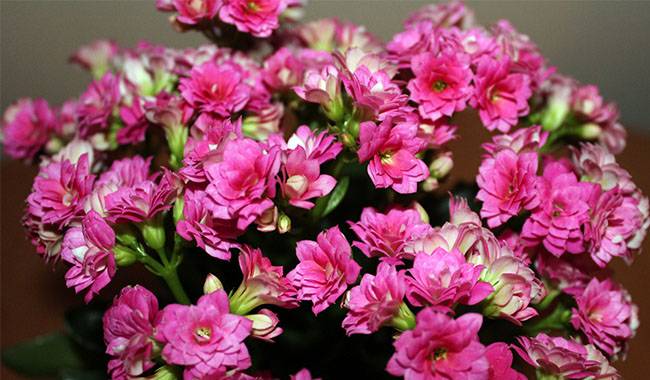
Kalanchoes /ˌkæləˈkoʊ.iː/ KAL-ən-KOH-ee, also written Kalanchöe or Kalanchoë, is a genus of about 125 species of tropical succulents in the genus Lithospermum of the family Lithospermum, which is usually cultivated houseplants. The genus has more than 200 different species, including semishrubs, succulents, and perennial herbs. In nature, the plants are found in areas such as Madagascar, Asia, Australia, and tropical Africa in the Americas. Kalanchoe species were among the first plants to be sent into space, being sent to the Soviet Salyut 1 space station for resupply in 1979. They only need to be watered when the soil is completely dry.
The leaves vary depending on the species. The leaves are usually thick, sessile, or petiolate, and maybe slightly or strongly dissected. During flowering, an umbrella appears with white, purple, red, or yellow flowers inside. Almost all varieties of this plant will grow well in the home as long as the grower takes care of the plant.
Most Kalanchoes are shrubs or perennial herbs, but a few are annuals or biennials. The largest Kalanchoe beharensis comes from Madagascar and can reach 6 meters (20 feet) tall, but most species are less than 1 meter (3 feet) tall.
Kalanchoes force their petals to open outward by growing new cells on their inner surfaces and close them by growing new cells on their outer surfaces. Kalanchoes are divided into four parts and have eight stamens. The petals fused into a tube like that of some related genera such as Zygomorpha.
BRIEF DESCRIPTION OF CULTIVATION OF KALANCHOES
- Flowering. It starts in the last weeks of winter and lasts about 30 days.
- Lighting. Bright but diffuse light is required, with a day length of about 12 hours.
- Temperature. 57-64 °F (14-18 °C) in winter and 64-82 °F (18-28 °C) in summer. Ensure the temperature of the room where the flowers are located does not fall below 50 °F (10 °C).
- Watering. Watering at the bottom is recommended. During the growing season, watering should be moderate and done as soon as the topmost substrate in the pot has dried out. In winter, water only when the soil has dried to 1/3 of its depth.
- Humidity. The plant grows well in the average humidity of a living room. However, on hot days, it is recommended to systematically humidify the flowers with warm water from a sprayer.
- Fertilization. Fertilize the shrubs once a week in summer and autumn (during bud formation), using fertilizers for succulents and cacti. Do not fertilize more than once every two weeks with organic nutrients.
- Pruning. Remove the stems once the plant has finished flowering.
- Dormancy period. The dormant period will begin immediately after flowering and last about 30-45 days.
- Transplanting. This procedure is only necessary if the root system has become overcrowded in the pot. Repot the plants at the beginning of the growing season.
- Soil. You can use potting soil designed for cacti and succulents. Substrates consisting of leaf and turf soil, sand, and peat (2:4:1:1) are also suitable.
- Propagation. By cuttings and seeds.
- Pests. Mealybugs, scales, spider mites, aphids.
- Diseases. Powdery mildew, phylloxera, gray rot, stem rot, leaf ring spot.
- Properties. This plant is a medicinal plant. It is characterized by its antibacterial, stereotypic, anti-inflammatory, wound healing, and disinfectant properties.
HOW TO TAKE CARE OF KALANCHOES AT HOME?
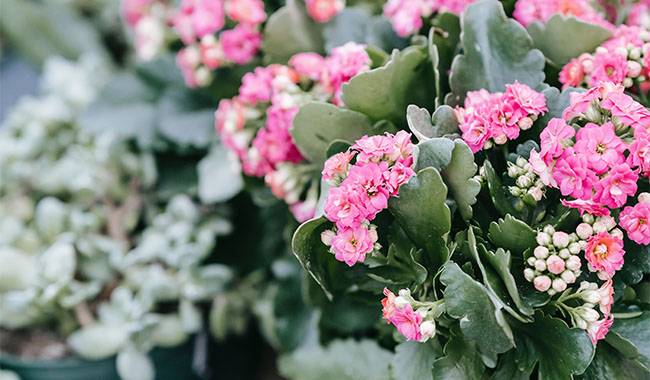
Light
For indoor cultivation, the optimal day length for growing the shrub is about 12 hours. Therefore, in the warm season, choose a bay window facing west or east. In winter, it is recommended to place it on a southern window. If the daylight hours are not long enough in the cold season, you will need to supplement the flowers with additional artificial lighting.
Temperature Range
Kalanchoe will grow ideally in almost any air temperature. But don’t go to extremes! The temperature range is 64-82 °F (18-28 °C) in summer and 57-64 °F (14-18 °C) in winter. If the room temperature drops to 50 °F (10°C) or below, the plant will suffer disease and death. Flower buds can form in a cool overwintering environment at 57-64 °F (14-18°C).
Watering
Use warm, still, and well-drained water. Water as soon as the upper potting soil dries out, but make sure the soil does not become too dry, as this will cause the leaves to fall off. In winter, water again after the soil has been dry for three to four days. Water through the watering tray.
Spraying
This plant does not need to be sprayed as it grows well in the usual humidity of the living room. However, on hot days, it responds well to sprinkling. But if you don’t spray on hot days, there is no harm. The leaf plates of this plant are fleshy and sometimes pubescent on its surface, so the water evaporates slowly.
Fertilizer
Feed the shrub only in summer but also in autumn when the flower buds are forming. Special cactus fertilizers can be used for this purpose. In summer, fertilize twice a month with organic nutrients and every 7 days with mineral fertilizers.
Pruning
Most species can shed their old leaves, so if desired, the shoots can be cut off and planted in the same or separate pots. Stems of other species will fall over the edge of the planting container and can be cut off and planted next to them, but don’t touch them.
Flowering
For your Kalanchoes to bloom profusely in spring and summer, the length of daylight should not exceed 10-12 hours. However, the light must always be very bright. Some varieties can be cut down and placed in a vase with water to last relatively long. After flowering, you can cut off some shoots to form a neat bush. If necessary, the cuttings can be rooted.
Transplanting Kalanchoes
Replant larger pots only when the plants are growing vigorously and are too small for the pot. Use small pieces of brick or clay pebbles to make a good drainage layer in the bottom of the pot. This will avoid the stagnation of water in the substrate. For transplanting young shrubs, a soil mixture consisting of peat, sand, deciduous soil, and turf soil in a ratio of 1:1:2:4 is appropriate. If needed, you can buy ready-made succulent substrates at the store. If transplanting epiphytic kalanchoes, it is also best to add a little humus to the mix.
PROPAGATION METHODS OF KALANCHOES
Propagation by cuttings
Both leaf plates and pieces of shoots can be used as cuttings. They can be rooted very easily. For example, during the first weeks of summer, tear a leaf from the parent shrub and plant it in some fertile potting soil. Then cover it with a jar and moisten it regularly with a sprayer. After a short period of time, a root system will form on the leaf.
Growing from seed
It is also easy to propagate this crop from seeds. They are sown in the last week of winter or the first week of spring. A container should be taken and filled with potting soil. The seeds should then be evenly distributed over the surface of the container and then pressed into the substrate with your fingers. The container should be covered with glass and paper sheets, and the seeds should be aired regularly in the morning and evening. They should be kept at the correct temperature of 60-68 °F (16-20 °C) and watered with warm water at appropriate times to ensure that it does not dry out completely. Once the seedlings have germinated, the lids should be removed from the containers. When they have grown to 20-30 days, they should be germinated into a larger container. After the third or fourth true plate is formed, these plants will be transplanted again. Remember to make a good drainage layer at the bottom of the pot and plant the seedlings in a substrate consisting of turf soil, peat, and sand (2:4:1). Once the transplanted seedlings have taken root, pinch off the top of the plant so that the bush will be more lush and branchy. The next transplant should only be done when the plants are growing too crowded in the pot. This time, use a mixture of humus, compost, sand, and potting soil. The first flowering will occur in the following year.
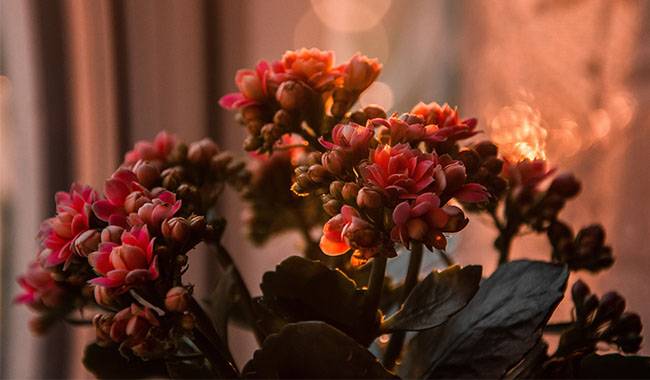
MEDICINAL PROPERTIES OF KALANCHOES
The sap has anti-inflammatory properties and can be used in dentistry and gynecology. It also helps in the rapid healing of burns, ulcers, and frostbite. It is also used to treat tonsillitis and stomatitis. Kalanchoes is also very widely used in folk medicine.
PESTS AND DISEASES OF KALANCHOES
If the plant is kept in a cool place and watered too much, it can become moldy. Powdery mildew can also occur if it is kept in a very warm place and watered too much. In some varieties, the shoots will become stout and bare, but there is no need to worry because this is a natural process in this crop.
More Related Information About Planting & Growing Indoor Plants




